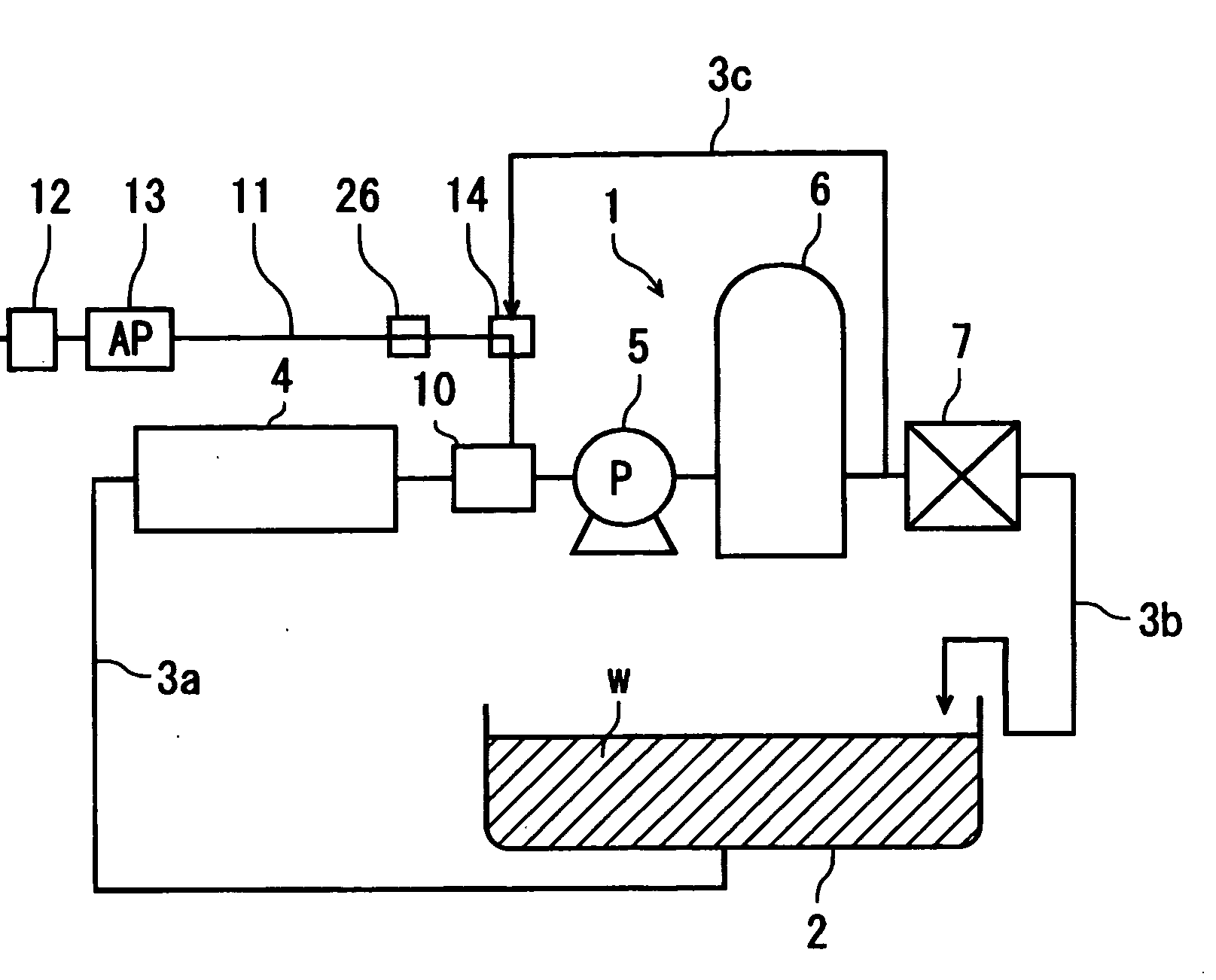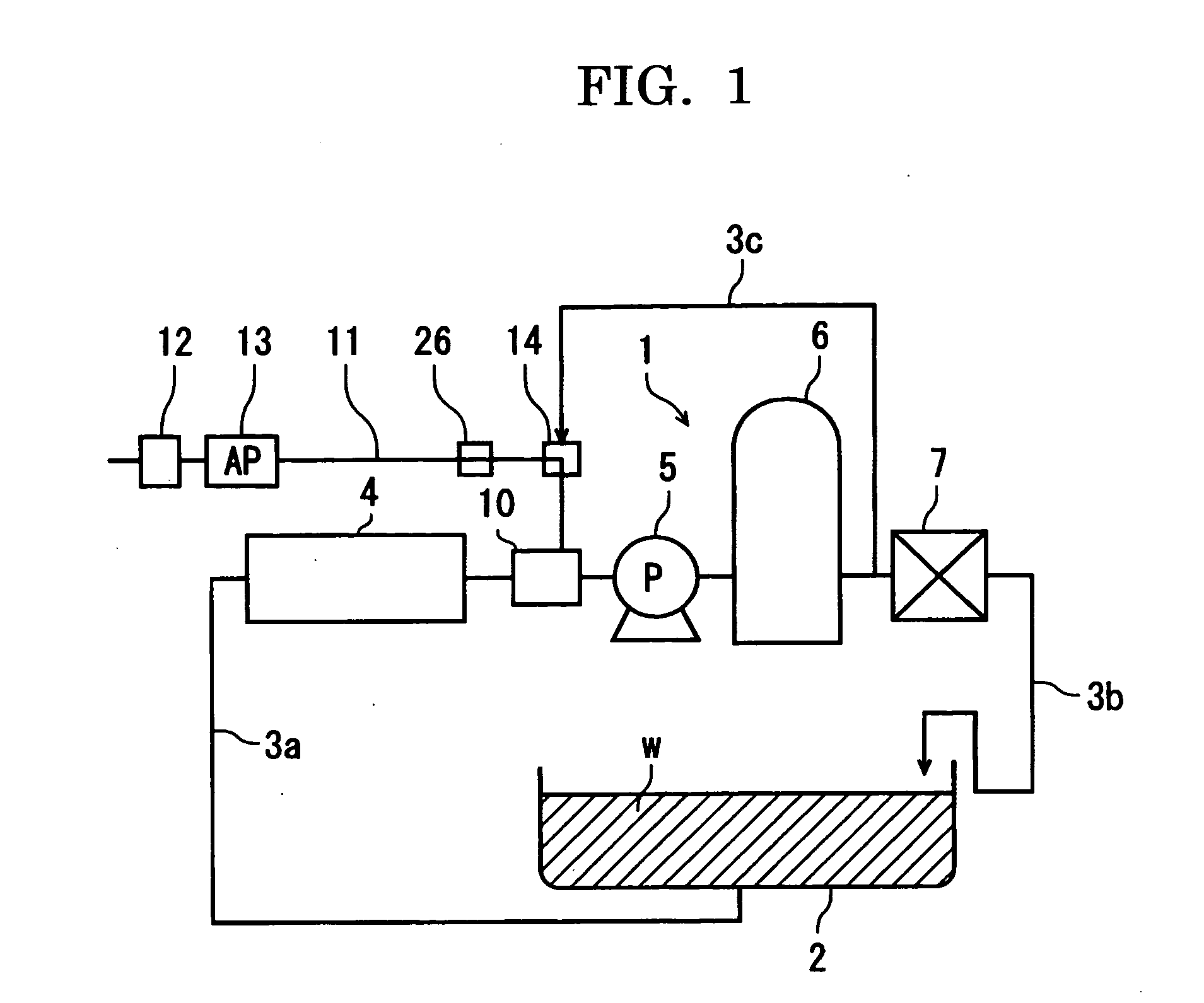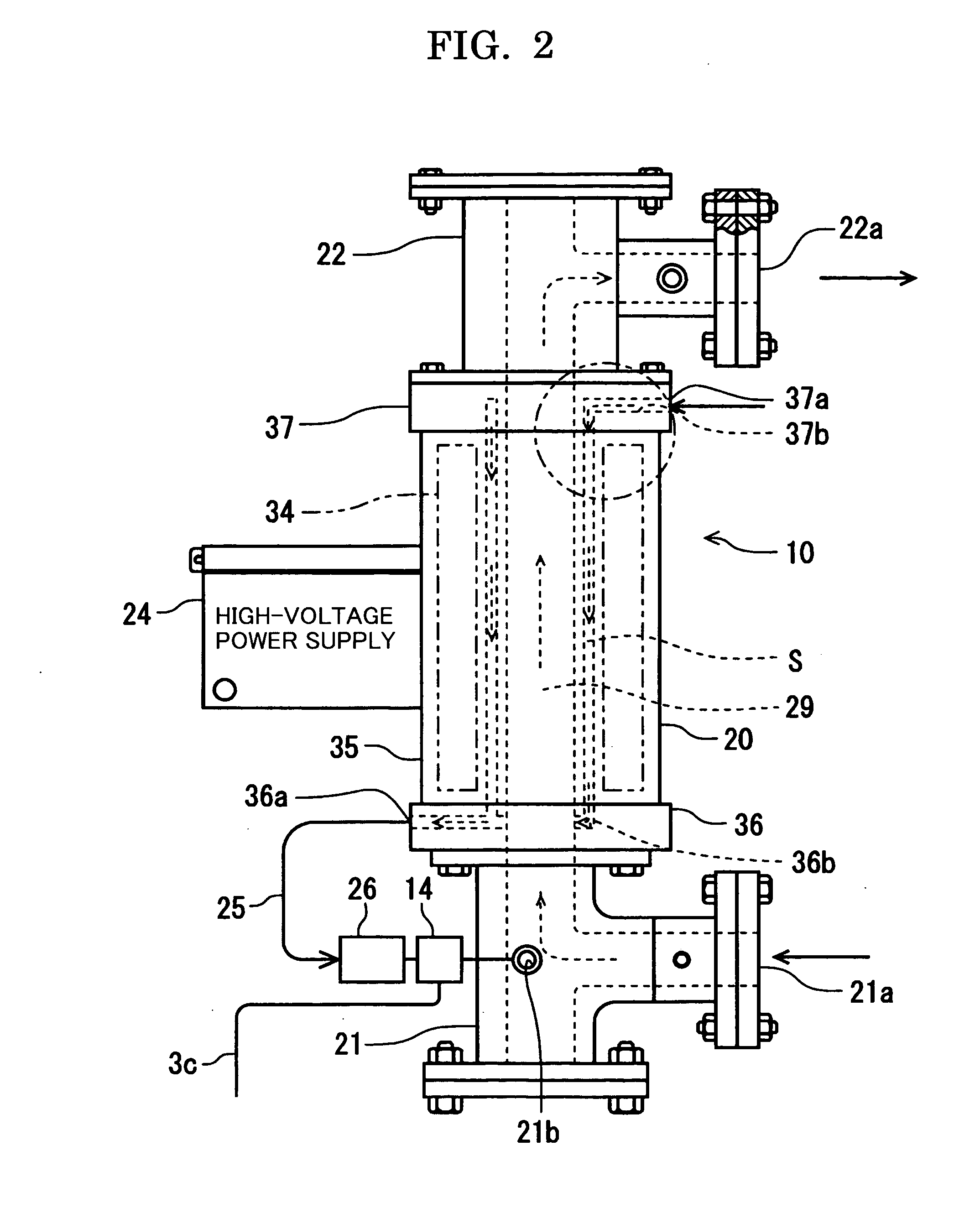Fluid Purification Device and Fluid Purification Method
- Summary
- Abstract
- Description
- Claims
- Application Information
AI Technical Summary
Benefits of technology
Problems solved by technology
Method used
Image
Examples
Embodiment Construction
[0057]An example of a fluid purification device and a fluid purification method in the present invention will be described in detail based on an embodiment.
[0058]In FIG. 1, a schematic diagram of a fluid purification system utilizing a fluid purification device of the present invention is shown, wherein the fluid purification system 1 treats liquid such as water as a fluid to be treated, is utilized in a hot spring, health facility and the like in the present embodiment, and treats circulating hot water of a bath as a fluid to be treated (water to be treated) W.
[0059]In the fluid purification system 1, the water to be treated W is retained in a bath 2, and the water W to be treated is arranged to be circulated by connecting a hair catcher 4, a device main body 10 of the fluid purification device, a circulation pump 5, a filtration tank 6, and a heat exchanger 7 by circulation piping 3.
[0060]The hair catcher 4 is provided in front of the device main body 10 so as to collect comparati...
PUM
| Property | Measurement | Unit |
|---|---|---|
| Pressure | aaaaa | aaaaa |
| Volumetric flow rate | aaaaa | aaaaa |
| Electric potential / voltage | aaaaa | aaaaa |
Abstract
Description
Claims
Application Information
 Login to View More
Login to View More - R&D
- Intellectual Property
- Life Sciences
- Materials
- Tech Scout
- Unparalleled Data Quality
- Higher Quality Content
- 60% Fewer Hallucinations
Browse by: Latest US Patents, China's latest patents, Technical Efficacy Thesaurus, Application Domain, Technology Topic, Popular Technical Reports.
© 2025 PatSnap. All rights reserved.Legal|Privacy policy|Modern Slavery Act Transparency Statement|Sitemap|About US| Contact US: help@patsnap.com



